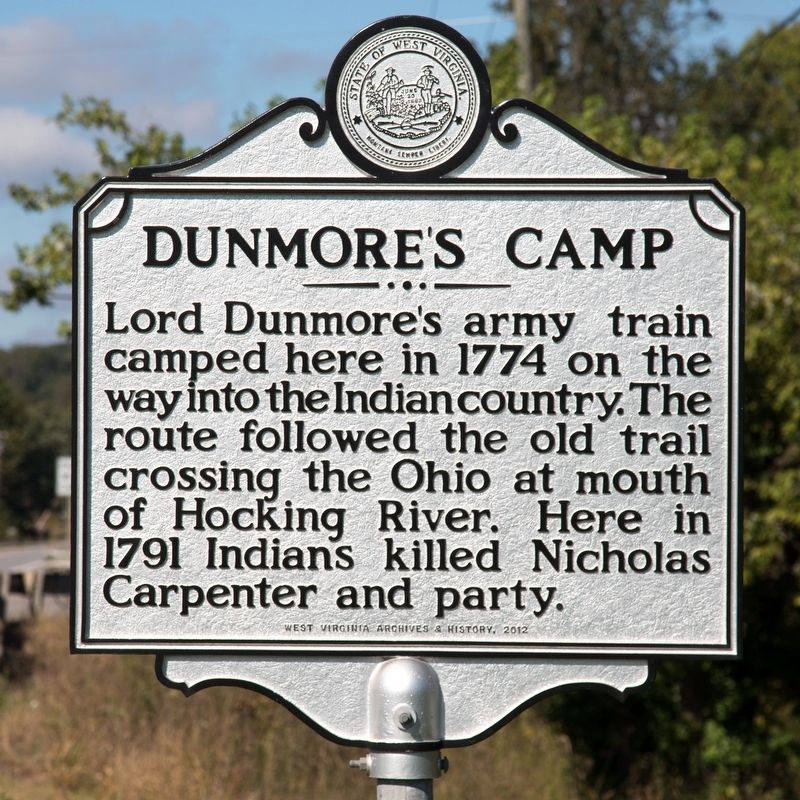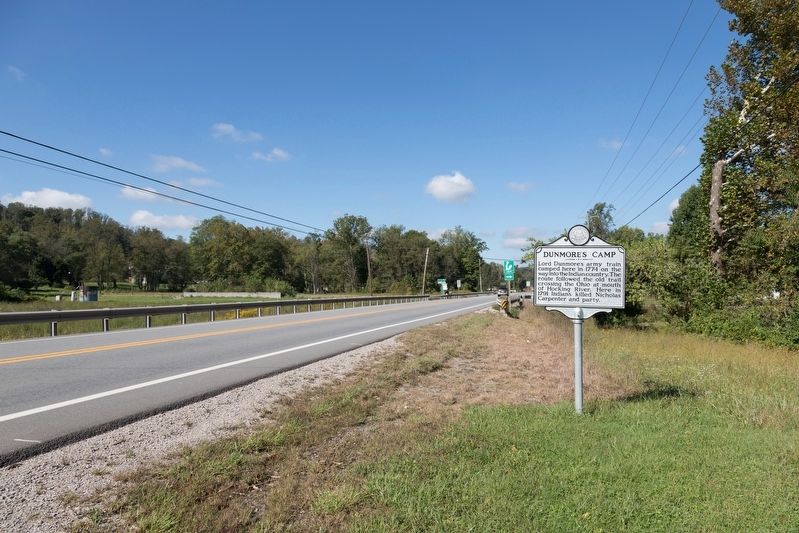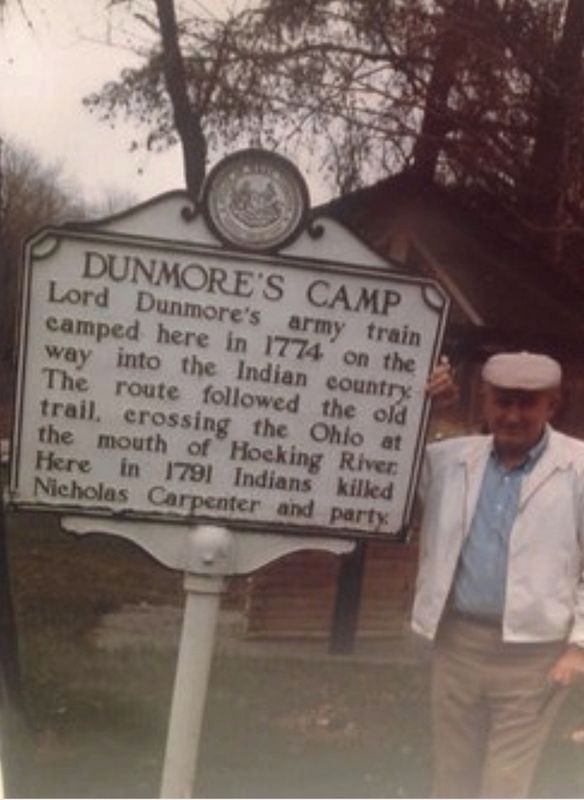Waverly in Wood County, West Virginia — The American South (Appalachia)
Dunmore’s Camp
Erected 2012 by West Virginia Archives and History.
Topics and series. This historical marker is listed in this topic list: Wars, US Indian. In addition, it is included in the West Virginia Archives and History series list. A significant historical year for this entry is 1774.
Location. 39° 20.122′ N, 81° 22.76′ W. Marker is in Waverly, West Virginia, in Wood County. Marker is on West Virginia Route 2 near 1st Street. Touch for map. Marker is in this post office area: Waverly WV 26184, United States of America. Touch for directions.
Other nearby markers. At least 8 other markers are within 7 miles of this marker, measured as the crow flies. Willow Island Memorial (approx. 5.6 miles away); This Millstone (approx. 5.8 miles away); Williamstown (approx. 5.8 miles away); Williamstown Veterans Memorial (approx. 5.8 miles away); Armstrong Garden (approx. 5.8 miles away); Wood County / State of Ohio (approx. 6 miles away); Henderson Hall (approx. 6.2 miles away); Commandant Archbold Henderson (approx. 6.2 miles away).
Also see . . . Wikipedia entry for John Murray, 4th Earl of Dunmore . “Dunmore became royal governor of the Colony of Virginia on 25 September 1771 . As Virginia’s colonial governor, Dunmore directed a series of campaigns against the Indians known as Lord Dunmore’s War. The Shawnee were the main target of these attacks, and his avowed purpose was to strengthen Virginia's claims in the west, particularly in the Ohio Country, but as a byproduct it was known he would increase his own power base. Some even accused Dunmore of colluding with the Shawnees and arranging the war to deplete the Virginia militia and help safeguard the Loyalist cause, should there be a colonial rebellion. Dunmore, in his history of the Indian Wars, denied these accusations.” (Submitted on October 3, 2018.)
Credits. This page was last revised on April 20, 2023. It was originally submitted on October 3, 2018, by J. J. Prats of Powell, Ohio. This page has been viewed 435 times since then and 43 times this year. Photos: 1, 2. submitted on October 3, 2018, by J. J. Prats of Powell, Ohio. 3. submitted on April 20, 2023, by Laura Pannekoek of Chesterton, Indiana.


